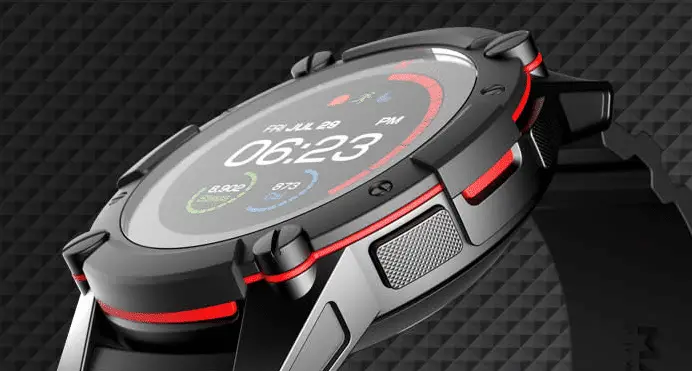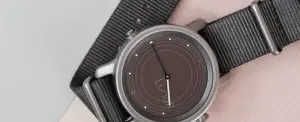Do self-charging Smartwatches exist? Yes, absolutely they do, but there are limitations. I think the number one reason people get frustrated with smartwatches and stop using them is that the battery needs to be charged all the time.
So why not make a smartwatch that doesn’t need to be charged at all similarly as automatic or self-winding watches in which the natural motion of the wearer provides energy to run the watch. Other options for energy are solar and thermal power. Sequent is working on a kinetic watch and Matrix has created a thermally powered watch and is working on creating a second generation device adding solar power.
Self-charging Smartwatches
There are not that many options for self-charging smartwatches to get the power from. The best-known choices are solar power and kinetic movement. A third option is to use a thermoelectric generator (TEG) to get power for the device.
The problem with all of these power generating options is that the power they can produce is quite limited and smartwatches have power hungry components like the display, cellular chip, GPS, heart rate monitor.
Because of the limitations in the power generating ability versus the demand for power, many manufacturers haven’t yet started to produce smartwatches which would be entirely self-powered. Out of the few manufacturers who have approached the challenge most have dropped out some features to save power. The easiest option is to create a hybrid smartwatch without a display as Sequent and Lunar have done. Matrix is the only company which is including a display and all the other features you would hope for in its second generation device.
Technology
There is a Swiss smartwatch module development company called MMT which has announced new technology that it promises will lead the way toward smartwatches that the wearer never needs to worry about charging. As I understand it they are working towards creating a smartwatch caliber which is self-charging for other companies to create smartwatches.
MMT is looking into different options of producing energy in a smartwatch. In addition to the obvious kinetic and solar energy, they are looking into energy harvested as radio frequency (RF) and thermoelectric generators (TEGs) which converts heat into energy.
Matrix Powerwatch
Matrix Powerwatch – First Generation Thermal Powered
The MATRIX PowerWatch is powered by a thermoelectric generator that captures your body heat.
The thermoelectric generator (TEG) senses body heat and converts it into energy. TEGs need to have a hot side and a cold side to operate. The hot side is the circular black aluminum plate on the back of the watch. The cold side is the entire metal bezel and body of the watch. The hot and cold sides are separated from each other by a layer of insulating thermoplastic. The TEGs harvest the heat flowing from the hot side to the cold side and turn it into electricity and stores it into a small battery. This battery maintains the time and fitness data when you are not wearing the PowerWatch, for up to one year.
This all sounds really cool to have your battery charged by thermal energy and removes the hassle of plugging in your smartwatch. It does bring some limitations though. The smartwatch doesn’t have GPS or heart rate sensors and based on my understanding the features are quite limited. They have also limited the Bluetooth power consumption which reduces the Bluetooth range.
Even with the limitations I still find it great that such technology is being developed and it may very well be that sometimes in the near future we will have a smartwatch with all the features we would expect without needing to charge it.
Matrix Powerwatch – Second-Generation Solar and Thermal Powered
There is an ongoing Indiegogo campaign for the Matrix Powerwatch 2 which uses solar power in addition to the thermoelectric power. This second generation Powerwatch adds GPS and wrist-based heart rate monitoring. In my mind, these are the features that really make it possibly a device that I would enjoy wearing instead of my current Garmin device.
The Indiegogo page gives an estimated schedule saying the Powerwatch 2 would be available in June 2019.
Matrix claims the PowerWatch 2’s continuous heart rate and GPS tracking could even last through a marathon.
Matrix has also said that Matrix-powered technology might in the future be seen in other brand name devices. I think it would be a game changer if Garmin were to launch a device similar to a Fenix 5 but with no need of charging.
Sequent SuperCharger Kinetic smartwatch
There was an Indiegogo campaign about the SEQUENT Smartwatch in 2017 advertised as the world’s first self-charging smartwatch. It’s not shipping yet, but the specifications are impressive with Heart Rate sensor, 3-axis gyroscope, accelerometer, and GPS.
It says it has a self-charging electro-mechanical embedded system (SEMES) which transforms kinetic energy into electrical energy by simply wearing it on your wrist. It’s a hybrid smartwatch, so there is no screen. Having no display saves a ton of power, but still, there is a heart rate monitor and GPS which drains a lot of power so I wonder will the power really be sufficient.
There are some prototypes shown in youtube videos, but they don’t really enlighten you about how the watch actually performs. I think we just need to wait and see once they start shipping them.
LunaR solar-powered smartwatch
LunaR had an Indiegogo campaign in 2017 like the other smartwatch manufacturers to create a solar-powered smartwatch.
They say that with daily exposure of as little as 1 hour (>10k LUX), LunaR’s solar panel can harvest enough power to deliver infinite battery life. The current price on this device is around 300 USD depending on the model.
The LunaR smartwatch is a hybrid without a screen to save battery life. The watch does provide activity tracking and notifications, but there is no GPS or heart rate monitor. So I would say functionality wise it is quite limited. I think it’s a good effort towards providing smartwatches which don’t require charging but it’s not quite at the level at which I would start using it. There are hybrids which are powered for 6 months with a coin cell battery and they provide more features so I think most people will look at those instead of this solar-powered device.
Casio solar-powered smartwatch
Casio launched at CES 2018 the GPR-B1000 G-SHOCK Rangeman with the World’s First Solar-Assisted GPS Navigation.
The Casio G-Shock watches have a large fan base and they have been very popular. It is interesting to see this new model with Solar charging capability. The smartwatch is extremely rugged as are all the G-shock models and it has a water resistant rating up to 200 meters.
The GPR-B1000 is equipped with dual wireless and solar charging systems to support activities in the outdoors. GPS navigation is usable for approximately 33 hours on a wireless charge of about five hours. If the battery becomes depleted, GPS functions can be resumed by charging the watch in bright light. (GPS functions are usable for one hour on a solar charge of approximately four hours in 50,000 lux conditions.) Regardless of the status of GPS functions, solar charging keeps the time display powered at all times.
It has a battery life that is far superior to any other GPS smartwatch. The Garmin Fenix 5X has a really good battery life, but this one, with its no-frills monochrome screen, holds the battery life almost indefinitely.
The watch doesn’t have a heart rate sensor and the smart features and activity tracking features are very limited. It’s not something I would consider especially at the 800 USD price point. I bet though that the Casio G-Shock has its fans and also there surely are some use cases I’m not that familiar with were the Casio features come more into play.



